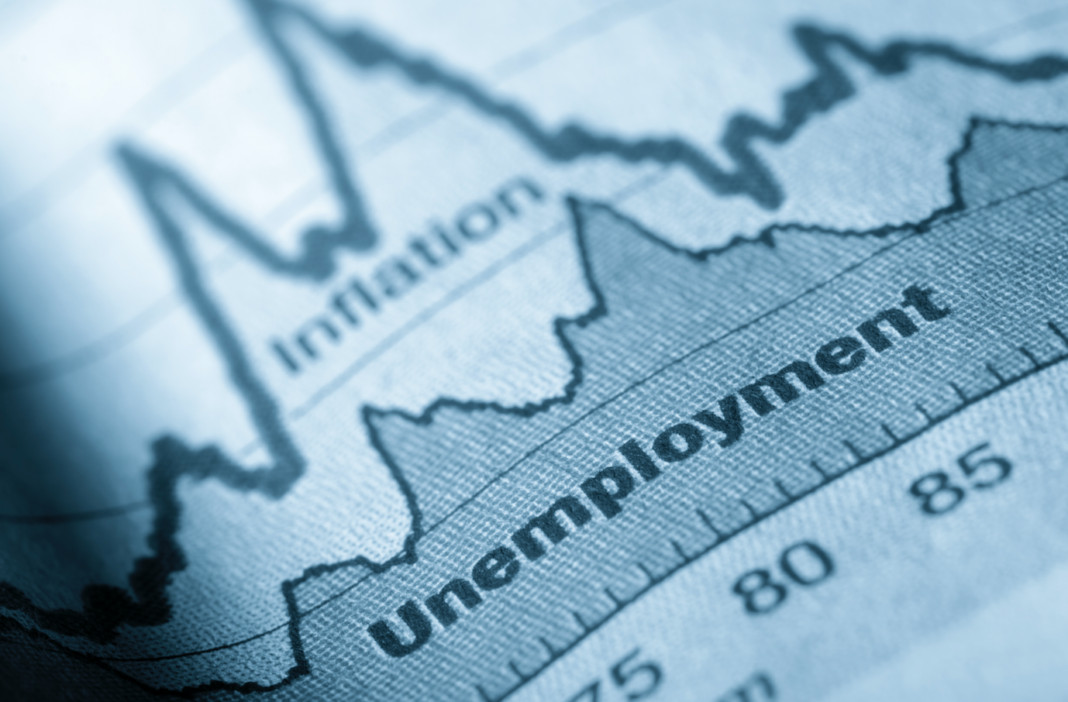US Economy Shows Resilience Amidst Jobless Claims Dip: GDP Growth, Inflation, and Fed's Next Move
The American economy continues to display surprising resilience, defying expectations with robust growth in the third quarter of 2024, despite a persistent rise in continuing jobless claims, which suggests a possible Federal Reserve interest rate cut in December. This complex economic picture is further complicated by upcoming inflation data, placing investors and economists in a state of anticipation.
Q3 GDP Growth and its Implications
The Commerce Department reported that the US economy expanded at a healthy 2.8% annual pace from July through September. This marked a slight slowdown from the 3% rate recorded in the previous quarter but still represents strong performance for the world’s largest economy. This sustained growth, exceeding 2% for eight of the past nine quarters, signals the American economy's robust nature. The report highlights strong consumer spending and a surge in exports as key drivers. However, the underlying reasons for this growth, particularly in the context of rising jobless claims, deserve careful scrutiny. This suggests underlying weaknesses in the job market that could eventually dampen economic growth.
Consumer Spending and Exports: The Engine of Growth
The substantial increase in both consumer spending and exports has been vital in maintaining the country's economic progress. Consumers, largely supported by stable employment, have continued purchasing goods and services. The growth in exports is another significant factor, indicating that the US remains a desirable destination for global trade. These positive elements, when viewed alongside the GDP growth, seem to highlight a strong economy. However, the other indicators paint a more complex story.
Jobless Claims: A Mixed Bag
While initial claims for state unemployment benefits dropped by 2,000 to a seasonally adjusted 213,000 for the week ended November 23, signaling continued strength in the labor market, the number of continuing jobless claims rose to 1.907 million for the week ending November 16. This increase, which is the largest increase in continuing claims in the last 2 years and shows a concerning trend, is a significant red flag for economists, who are now questioning whether the American economy can maintain this kind of growth in the long run. The fact that many laid-off workers are experiencing extended periods of unemployment suggests underlying weaknesses in the job market that may necessitate further intervention from the Federal Reserve.
The Persistent Unemployment Issue
The rise in continuing jobless claims warrants close attention. This suggests that while some job creation is occurring, many laid-off workers struggle to find new employment. This prolonged unemployment significantly impacts economic indicators beyond just the raw unemployment rate and could indicate potential for future economic instability. The increasing duration of unemployment is a major concern as it signifies a deeper problem affecting the overall economic health of the nation.
Inflation and the Federal Reserve's Dilemma
The Federal Reserve's preferred measure of underlying inflation, the personal consumption expenditures (PCE) price index excluding food and energy, is projected to have risen by 0.3% in October, and by 2.8% year-over-year. This is significant as it is the highest advance since April, and surpasses the Fed’s 2% target. The upcoming data release on this measure will play a critical role in the Fed’s decision-making process regarding potential interest rate cuts. While inflation remains above the target, the Fed’s overall stance appears more cautious in its approach.
The Fed's Tightrope Walk
The Federal Reserve is navigating a delicate balancing act. They must consider both inflation and potential economic slowdown. The divergence between the seemingly positive GDP growth and the increased continuing jobless claims necessitates a nuanced approach to policy. If the inflation data comes in above estimates, the Fed may hold off on further rate cuts or even opt for a more hawkish approach. Conversely, if inflation is closer to target or even decelerates, this would increase the possibility of rate cuts. This intricate balancing act emphasizes the importance of forthcoming economic data.
Global Market Reactions
Global markets are reacting cautiously to the mixed economic signals emanating from the United States. European stocks dipped, and Asian markets showed a mixed response. The potential impact of President-elect Donald Trump’s proposed tariffs is also adding to the uncertainty. The strength of the US dollar has also fluctuated amidst this economic uncertainty. It's clear that the upcoming data releases will impact not just the US market, but financial markets globally, underscoring the interconnectedness of the global economy.
Navigating Uncertainty
Investors are grappling with uncertainty, balancing positive GDP growth with rising unemployment. The upcoming PCE price index release will be critical in shaping market sentiment. The anticipated data will likely determine the direction of future investments in the short-term. This situation necessitates continued monitoring of economic indicators and close observation of the Federal Reserve's response.
The Crystal Ball: What Lies Ahead?
The US economy is at a crossroads. The resilience shown in GDP growth is tempered by concerns about persistent unemployment and elevated inflation. The upcoming inflation data and the Federal Reserve's subsequent decision on interest rates will be pivotal in determining the trajectory of the economy. A combination of factors will influence future economic forecasts, including consumer spending habits, the effectiveness of the Federal Reserve's actions, and any global economic changes. The coming months will certainly be crucial in determining the long-term health of the American economy. The interplay of these factors will undoubtedly influence the direction of the US economy in the months ahead. Only time will reveal whether this economic resilience can be maintained and what the ultimate impact will be on global markets.

















